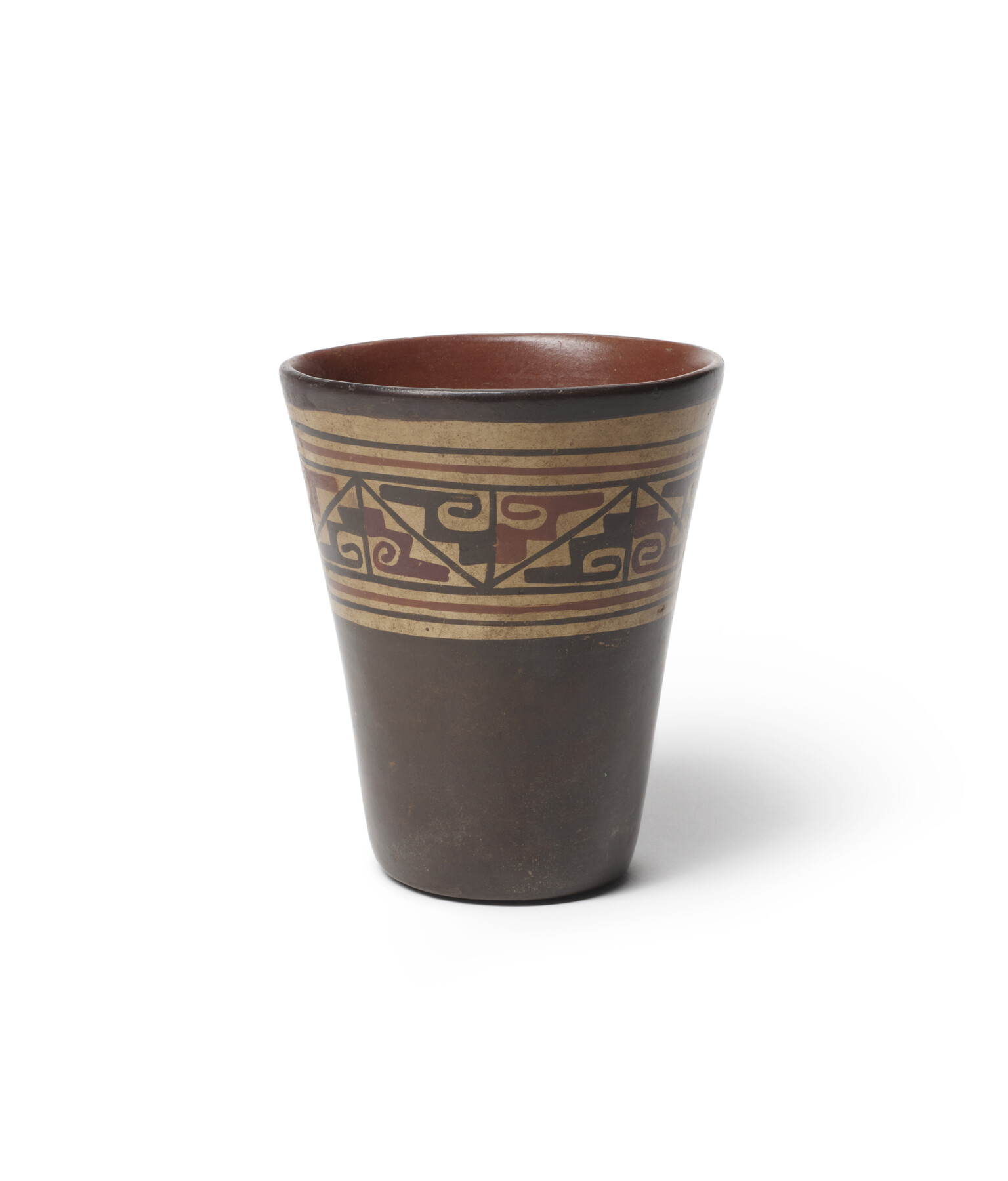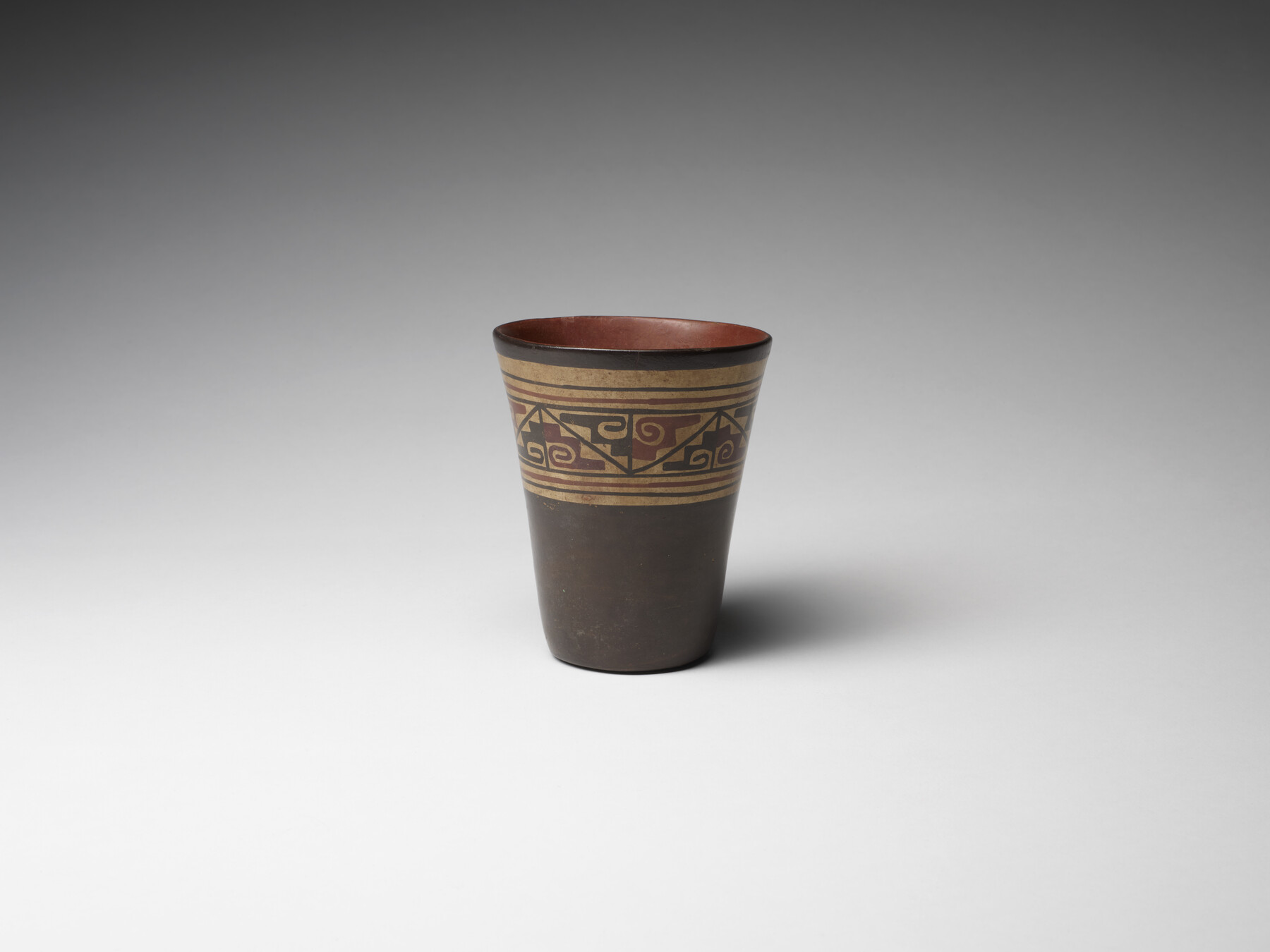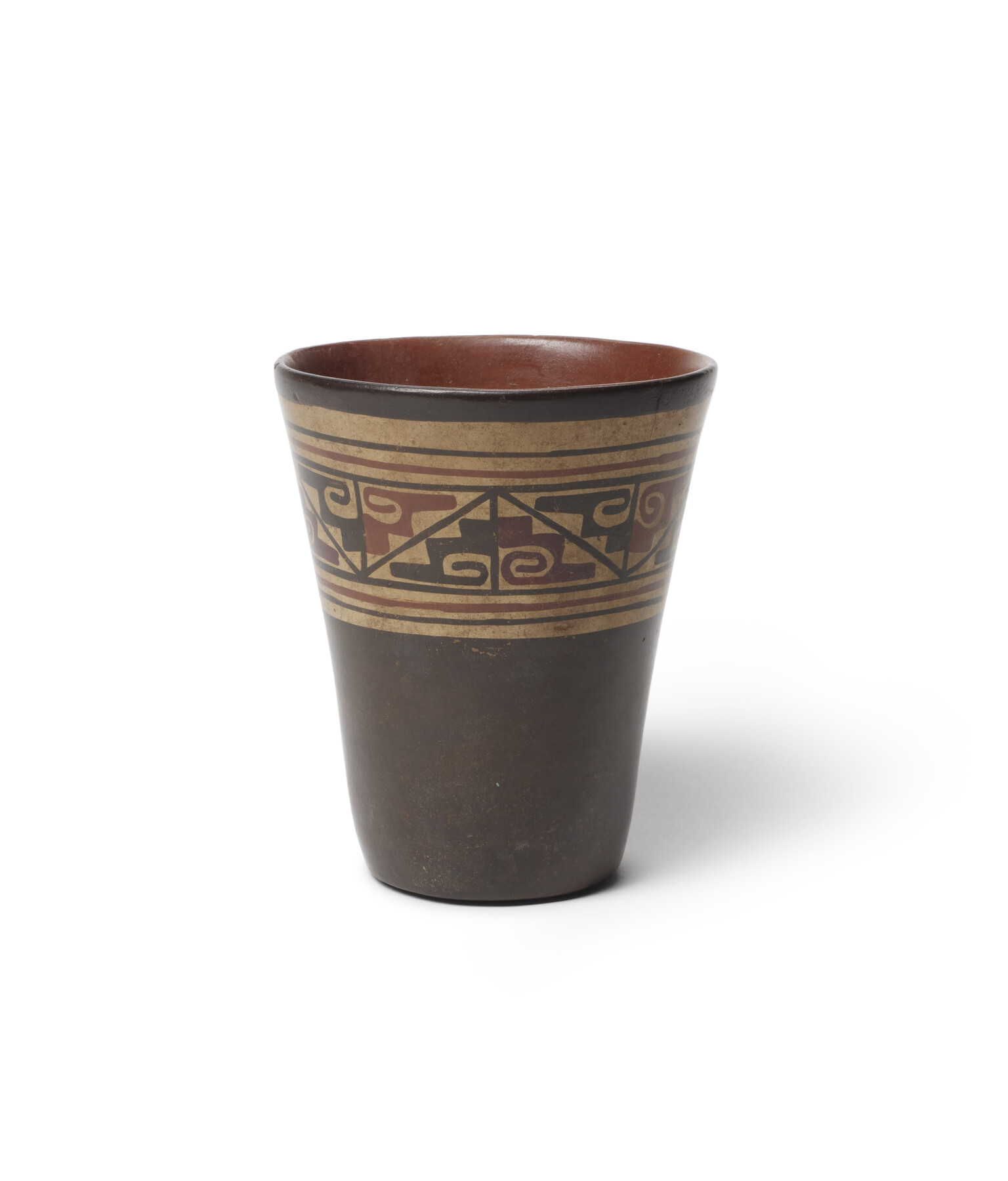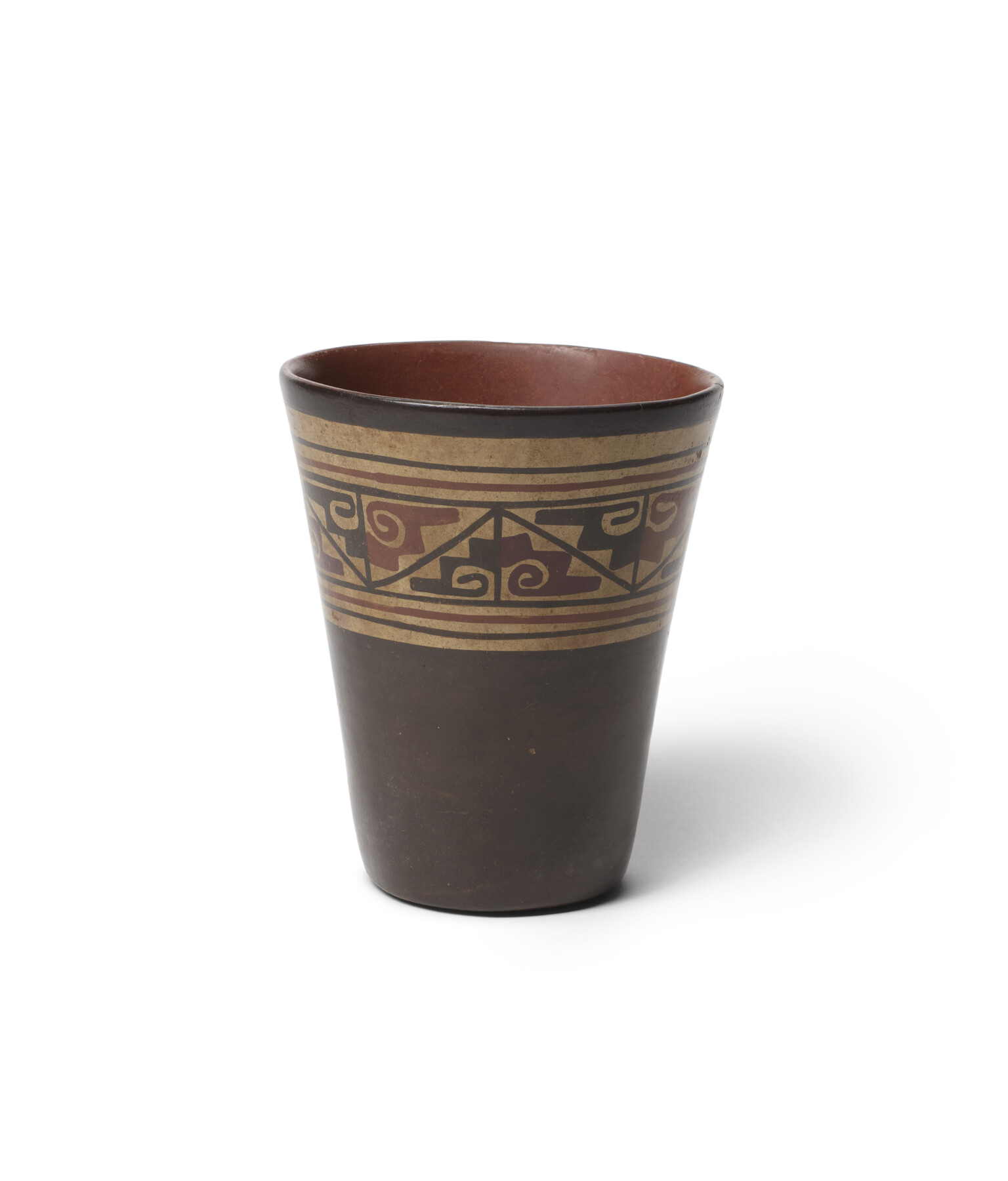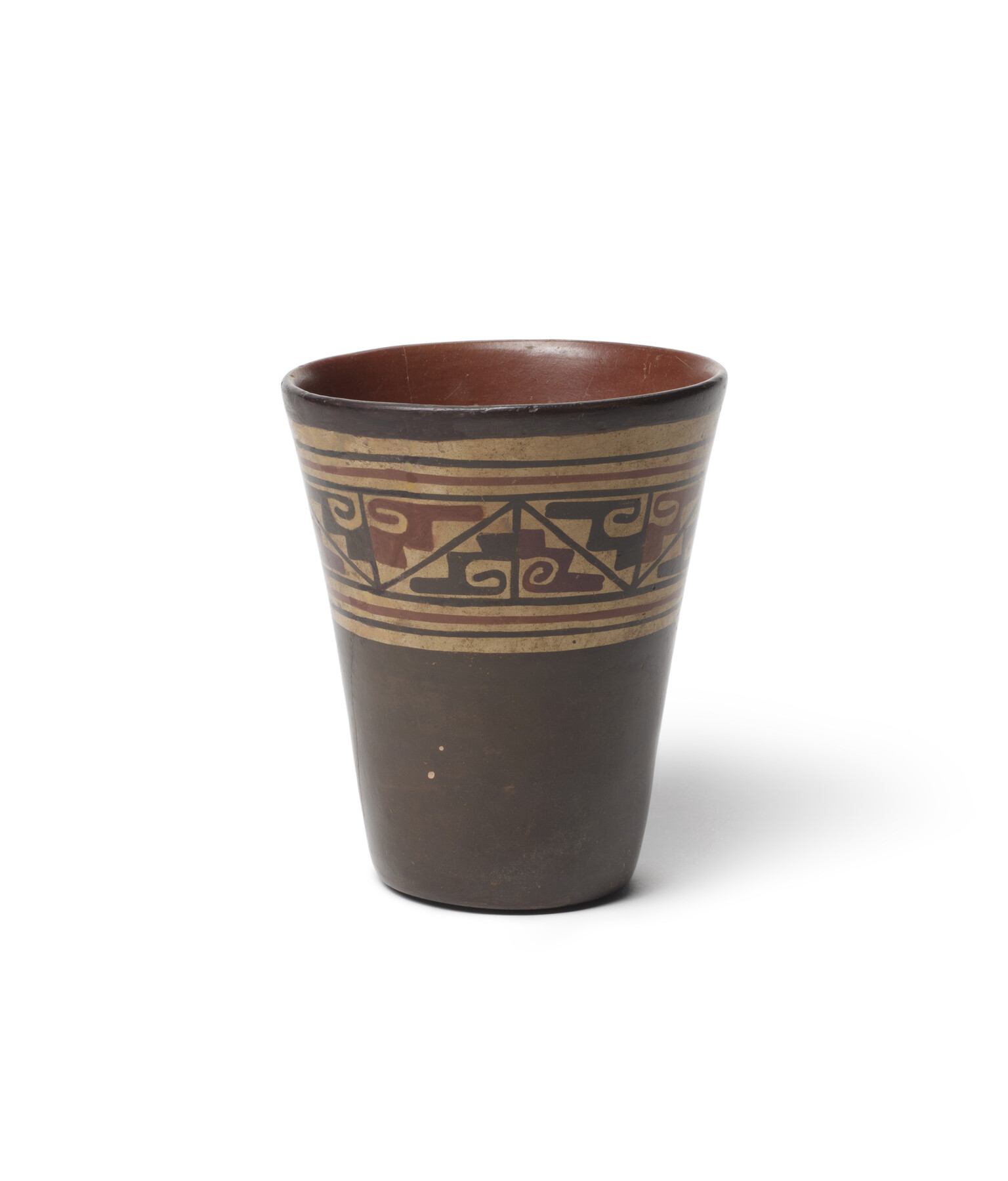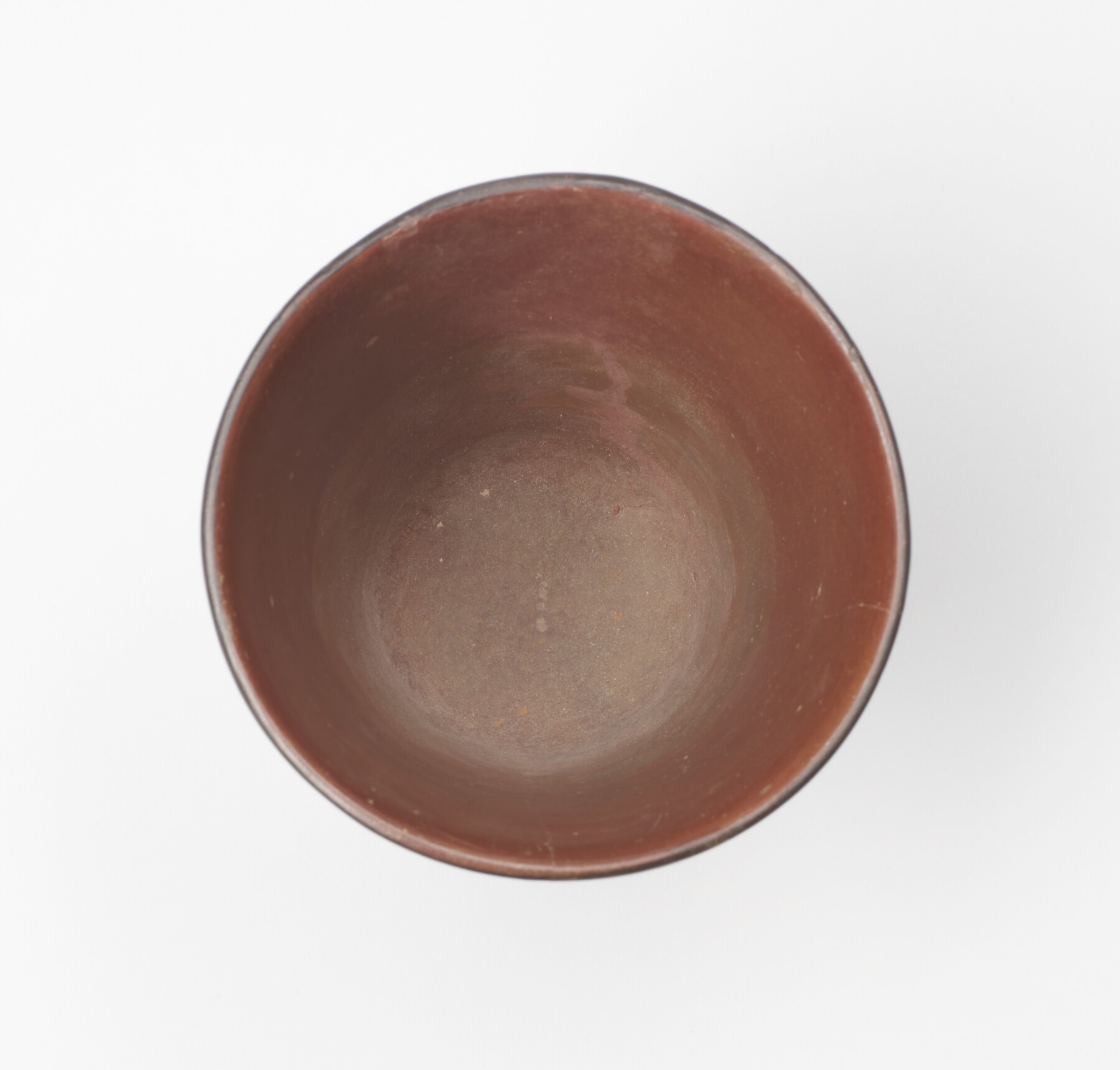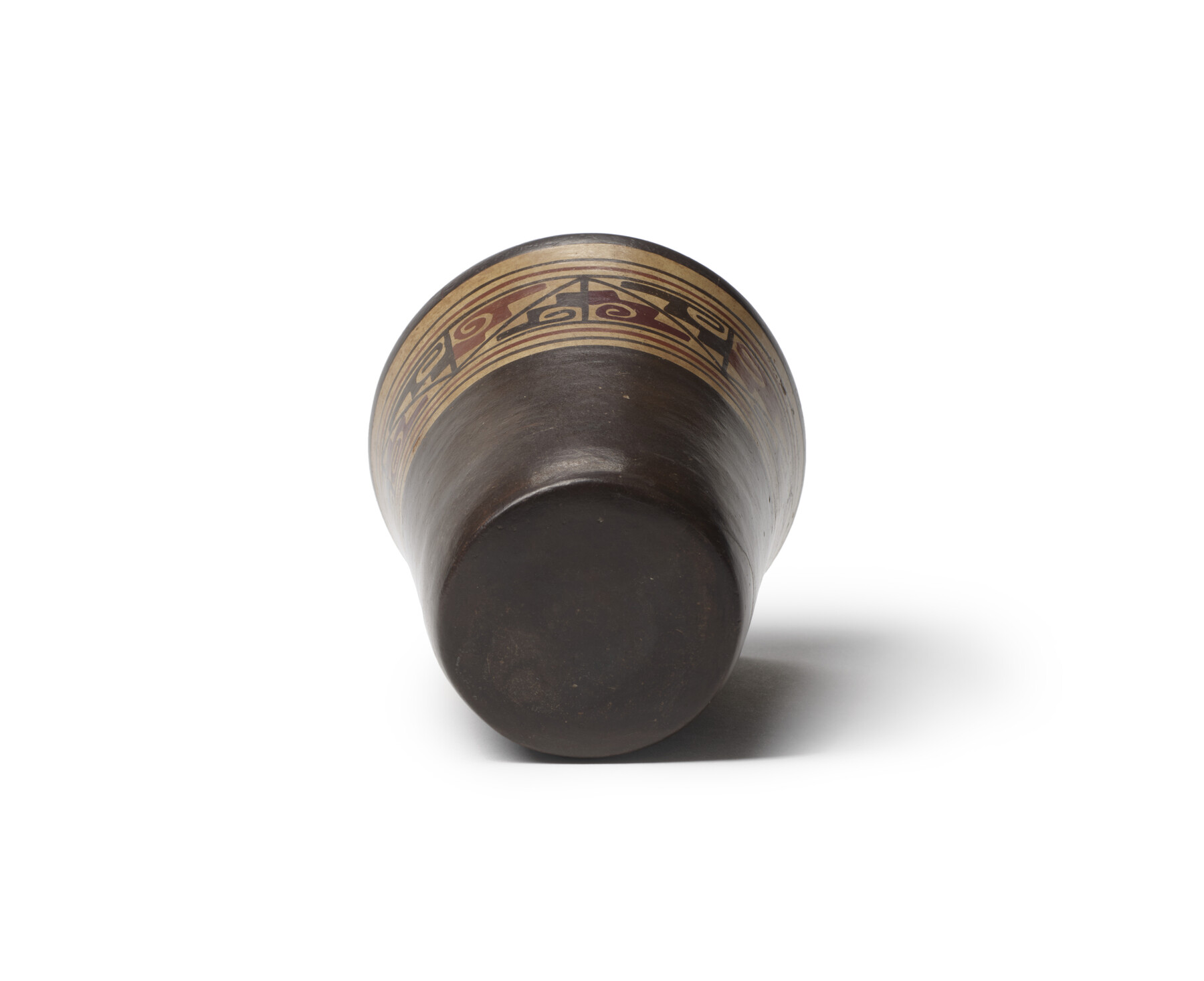Drinking Vessel ("Kero")
(Ancient Americas )
The design on this kero recalls the extreme abstraction that typifies Wari-style textiles from the southern coast. The step-fret/curl is a frequent Wari decorative motif, perhaps alluding to an undulating ground line/architectural feature like that seen at the base of the carved narrative on the Gate of the Sun at Tiwanaku. However, Wari textile imagery was purposefully manipulated to the point of unrecognizability of the original form, such intentionally designed camouflage making problematic any interpretation of the motif decorating this beaker. Such obfuscation served to highlight the artistry of the weaver, who exercised great skill to maintain the original essence of such a completely abstracted representation.
In general, drinking vessels such as this one, known as "keros" when made of wood, and "aquillas" when made of gold or silver, were used for ritual exchange and consumption of the mildly alcoholic corn beverage known as "chicha." These names are from the Quechua language spoken by the later Inca people, scholars are not certain if the same terms were used by the Tiwanaku people as well.
Provenance
Provenance (from the French provenir, 'to come from/forth') is the chronology of the ownership, custody, or location of a historical object. Learn more about provenance at the Walters.
Vincent Price Collection. Ron Messick Fine Arts, Santa Fe, New Mexico; purchased by John G. Bourne, between 1990 and 1999; given to Walters Art Museum, 2013.
Exhibitions
| 2012-2013 | Exploring Art of the Ancient Americas: The John Bourne Collection Gift. The Walters Art Museum, Baltimore; Frist Center for the Visual Arts, Nashville. |
Geographies
Peru, Southern Highlands (Place of Origin)
Measurements
H: 4 1/2 x Diam: 4 in. (11.43 x 10.16 cm)
Credit Line
Gift of John G. Bourne, 2013
Location in Museum
Charles Street: Second Floor: Latin American Art / Arte Latinoamericano
Accession Number
In libraries, galleries, museums, and archives, an accession number is a unique identifier assigned to each object in the collection.
In libraries, galleries, museums, and archives, an accession number is a unique identifier assigned to each object in the collection.
2009.20.91

